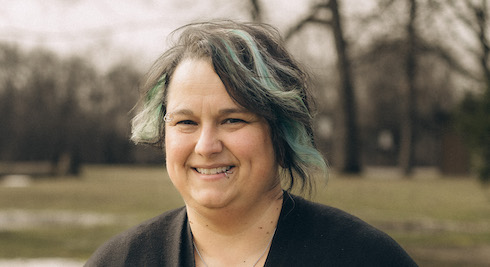God gently but unquestionably began to show me that He had led me to Los Angeles to “build a house unto the Lord.” His message encouraged, “Shout, for the Lord hath given you the city.”
When this burden first came from heaven, I tried to shake it off, supposing that the idea might be of self. But the call persisted. Then I shrank from such an ambitious task. Who ever heard of a woman without earthly backing or any organization behind her undertaking the raising of funds for the erection of such a building?
But louder and clearer came the call of God: “Build a house unto the Lord.” Little did I imagine that this structure would be a mighty and glorious temple. If I had ever dreamed that the plan of God encompassed a building the likes of Angelus Temple, the audacity and seeming impossibility of so gigantic an undertaking would have alarmed me so as to muzzle my very mention of it. How little we knew of the plans of God that would be unfolded in the immediate future.
Certainly Los Angeles was ripe for revival. This great metropolis appeared to afford perhaps the greatest opportunity for God of any city of America. Thousands of tourists were coming from every state, many coming to reside. Statistics at the time indicated that 2,000 a day were arriving. Their other needs had been provided for in the city—homes, amusements, highways and parks. But, alas, there were few adequately large buildings where they might hear the Word of God in its blessed Pentecostal fullness.
Each time I returned to Los Angeles, there was added to the call of the Lord the urging of hundreds of letters and contacts emphasizing the need for a revival tabernacle. One day in the summer of 1920, the call rang so urgently in my heart that I climbed into the automobile and, with my mother, set out in search of land. I was strangely impressed to turn toward Glendale Blvd. I had never been in this section of Los Angeles before. In just a few minutes, we reached Echo Park.
“Oh, this is heaven!” I cried. “The most beautiful spot for a house of the Lord I have ever seen. It’s right in the city, yet so restful.”
There flashed before my mind scenes in other great cities where I had preached. When the buildings had to be emptied between meetings, the people had stood in hot sun or rain, hour after hour, waiting for the auditorium doors to open.
“Here, they would have parks, trees, grass and benches, picnic tables, restrooms—everything they could desire to be comfortable between meetings!” I exclaimed to Mother.
Just beyond the park we spied a circular piece of property. “What a wonderful site that would be for the tabernacle!” I exclaimed. Like a flash from heaven, I visualized the general plan for the structure. There leaped within my heart the assurance: “This is the place!”
A real estate office was nearby. When we mentioned the property we had in mind, the agent declared: “But, ladies, that particular piece of land is not for sale. It’s about the only vacant property in this district that is not on the market. A wealthy lady who has many real estate holdings owns it, but she refuses to sell any of her land. Other people have tried to get this property and have offered high prices, but she has always answered, ‘No, I am not interested in selling.’ ”
“Well, praise the Lord,” I replied. “I can see clearly that this is to be our piece of land. The Lord must have been saving it for us all the time.”
The real estate man shook his head and looked at us doubtfully as we departed. But I knew we had found the place. I commenced contemplating some of the advantages the tabernacle would afford. There would be no need to interrupt a revival, as we had been compelled to do in many rented auditoriums. The tabernacle could be engineered so that I could make myself heard without the difficulty I had encountered in some of the large edifices.
A day or two later, we were impressed to return and look again at the land. We found a sign advertising the property for sale. I took a pencil and sketched upon the signboard a diagram of the “house unto the Lord.”
We found our way to the property owner’s home. The elderly lady told us she owned too much land. “I suddenly decided I am land poor,” she explained. “This is the first piece of property I will sell.” She offered us a splendid price.
It was time, however, to leave Los Angeles again to fulfill four months of evangelistic appointments. Through all those travels and meetings, God kept the vision of the tabernacle before me. I put the fleece out to be absolutely certain that if this were God’s place and time and purpose, the property would remain available until our return. This looked improbable, as vacant lots in that section of the city were rapidly changing hands. However, upon our return, we found the door still open; so we purchased the land.
The first announcement of the proposed structure appeared in the January 1921 Bridal Call, headlined: “Echo Park Revival Tabernacle to Be Erected in Los Angeles.” It would be 18 months before the name was changed to Angelus Temple, and two years until the dedication.
Adapted from Aimee: The Life Story of Aimee Semple McPherson by Aimee Semple McPherson, copyright 1979. Published by the International Church of the Foursquare Gospel.

